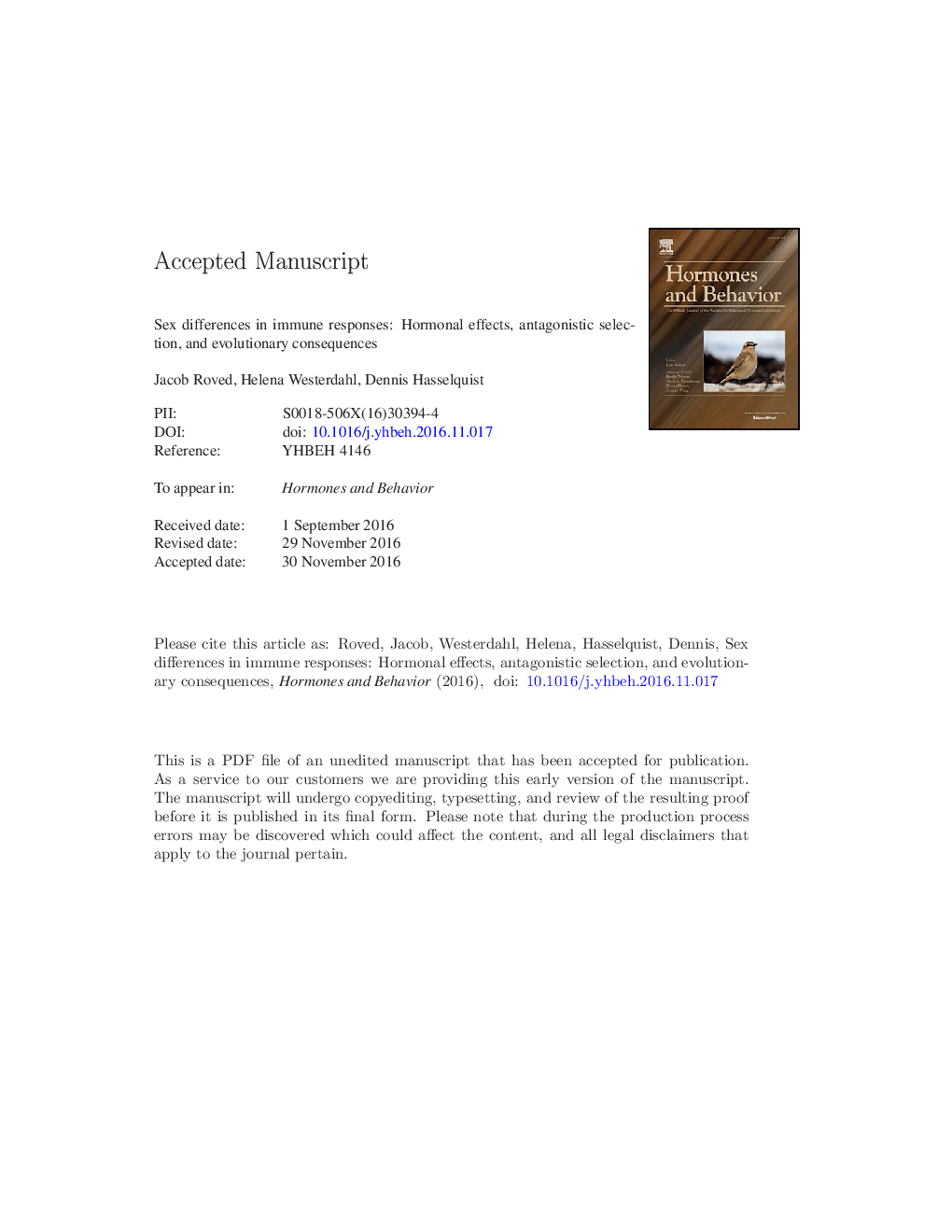| کد مقاله | کد نشریه | سال انتشار | مقاله انگلیسی | نسخه تمام متن |
|---|---|---|---|---|
| 4931207 | 1432752 | 2017 | 63 صفحه PDF | دانلود رایگان |
عنوان انگلیسی مقاله ISI
Sex differences in immune responses: Hormonal effects, antagonistic selection, and evolutionary consequences
ترجمه فارسی عنوان
تفاوت جنسی در پاسخ های ایمنی: اثرات هورمونی، انتخاب آنتاگونیستی و پیامدهای تکاملی
دانلود مقاله + سفارش ترجمه
دانلود مقاله ISI انگلیسی
رایگان برای ایرانیان
کلمات کلیدی
موضوعات مرتبط
علوم زیستی و بیوفناوری
بیوشیمی، ژنتیک و زیست شناسی مولکولی
علوم غدد
چکیده انگلیسی
Males and females differ in both parasite load and the strength of immune responses and these effects have been verified in humans and other vertebrates. Sex hormones act as important modulators of immune responses; the male sex hormone testosterone is generally immunosuppressive while the female sex hormone estrogen tends to be immunoenhancing. Different sets of T-helper cells (Th) have important roles in adaptive immunity, e.g. Th1 cells trigger type 1 responses which are primarily cell-mediated, and Th2 cells trigger type 2 responses which are primarily humoral responses. In our review of the literature, we find that estrogen and progesterone enhance type 2 and suppress type 1 responses in females, whereas testosterone suppresses type 2 responses and shows an inconsistent pattern for type 1 responses in males. When we combine these patterns of generally immunosuppressive and immunoenhancing effects of the sex hormones, our results imply that the sex differences in immune responses should be particularly strong in immune functions associated with type 2 responses, and less pronounced with type 1 responses. In general the hormone-mediated sex differences in immune responses may lead to genetic sexual conflicts on immunity. Thus, we propose the novel hypothesis that sexually antagonistic selection may act on immune genes shared by the sexes, and that the strength of this sexually antagonistic selection should be stronger for type 2- as compared with type 1-associated immune genes. Finally, we put the consequences of sex hormone-induced effects on immune responses into behavioral and ecological contexts, considering social mating system, sexual selection, geographical distribution of hosts, and parasite abundance.
ناشر
Database: Elsevier - ScienceDirect (ساینس دایرکت)
Journal: Hormones and Behavior - Volume 88, February 2017, Pages 95-105
Journal: Hormones and Behavior - Volume 88, February 2017, Pages 95-105
نویسندگان
Jacob Roved, Helena Westerdahl, Dennis Hasselquist,
